
Friday, February 28, 2014
What We Might Read Into Sollecito Lawyer Giulia Bongiornos Final Arguments To The Appeal Judges
Posted by Machiavelli
Under the table & over the top
The picture of a serene-looking Giulia Bongiorno waving a couple of knives in court on 9 January may be visual inspiration to this reflection about what we can understand from the structure and content of her closing arguments.
A very peculiar feature of her arguments was the desperate opening, suggesting to put the investigation ““ and the whole justice proceedings ““ on trial.
The introductive topic of her speech is a quote from a book by Alessandro Satta, a narrative description of the riotous irruption of the mob inside the Revolutionary Tribunal hearing room on Sep. 2. 1792, the defendants are the some of the King’s Swiss guards.
The passage by Satta describes the “horrendous” vision of a hord of sanculots slowly gathering outside the court, Bongiorno compares that to the angry mob in Perugia after the first appeal verdict.
But if you read the same text by Satta a little further, a few lines beyond the snippet Bongiorno was reading, the narration goes on describing how sanculots manage to enter the courtroom, in a force of hundreds ready to lynch the defendants, but they are suddenly halted by an authoritative order of the Judge, and they unexpectedly obey.
Just after that, Satta drops in an explanatory quote from the book Le Tribunal révolutionnaire (by historian Lenotre) saying: “the people understood that these highly educated individuals in black robes would have gone on with the action started by the hords, and they would accomplish it more perfectly”.
It seems like Bongiorno opened her speech with an implicit depiction of the judges and magistrates of Perugia as kind of Jacobin extremists whose task is to “legitimize” the vindictive fury of a pitchforks mob.
The quote she read did not include Satta’s conclusive lines, so that the consequent thought about the judges’ role remained unexpressed and in the background.

(Photo by Machiavelli_Aki)
A side note about Bongiorno’s arguments: in fact I had the feeling that allusion to implicit subtexts was something that belonged to her speech as a method or a style, it marked the whole of her arguments. You may recall Wittgenstein’s dictum “This work consists of two part, what is written in it, and what is not written in it. The latter is the most important part.”
Such a motto might be apt to address the major feature of Bongiorno’s defensive argument, insofar as she conveyed that something that “couldn’t be talked about openly” was there and that was probably a main argument.
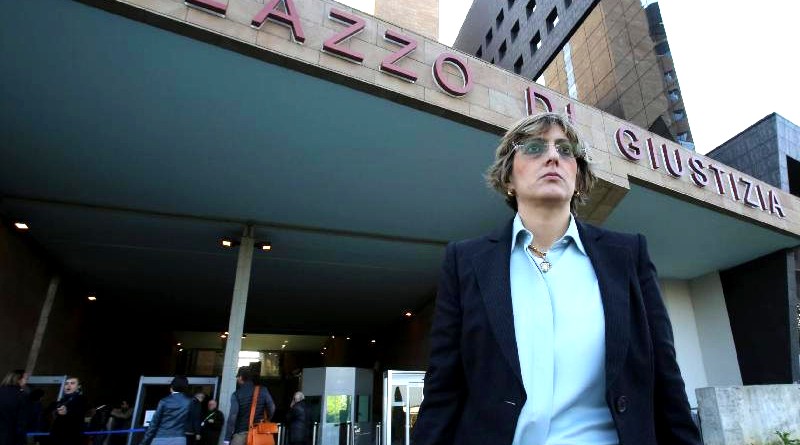
(photo by Ansa)
At first, as I said, she went through a brief emotional recollection of her moments while in Perugia surrounded by a raging mob, and then she unfolded the rest of her introductive section.
The purpose of this bit of revolutionary narrative first juxtaposing the Perugian citizens to Sanculots and the judges to Jacobins, and then, immediately following, a series of accessory arguments all encompassed by an introductive function, all this was clearly intended to set a framework thesis meant to work as a basis for the structure of the whole defensive arguments.
It is in fact a peculiar structure, apparently entirely resting upon one, single elaborate premise.
The thesis she places at the foundation of the entire defensive argumentation is the following: the trial as a whole, as much as its outcome, had been somehow determined and “tainted” from the beginning by events which occurred within a very short framework of time, in the very early days of the investigation, the weeks around the time of the suspects’ arrests.
Bongiorno suggested that only this “short period” ““ the early days of November 2007 - is what matters and the only topic worth of a defence analysis; since this was the time frame within which - according to Bongiorno - everything was decided, this was the time when some “errors” in the investigation occurred, before the point when a veil of prejudice and hatred fell upon people’s hearts and minds like kind of black curtain, preventing from that moment on any fair or rational judgement.
Aggressive Digressions
After the quoting of Satta’s speech, she develops her introduction for a while, branching out into some political-sociological speculations (such as that authorities chose the crime scenario that was most reassuring for the population) as well as some political-anthropological consideration (like the theory that free spirited women are seen as suspicious as a consequence of women empowerment movements).
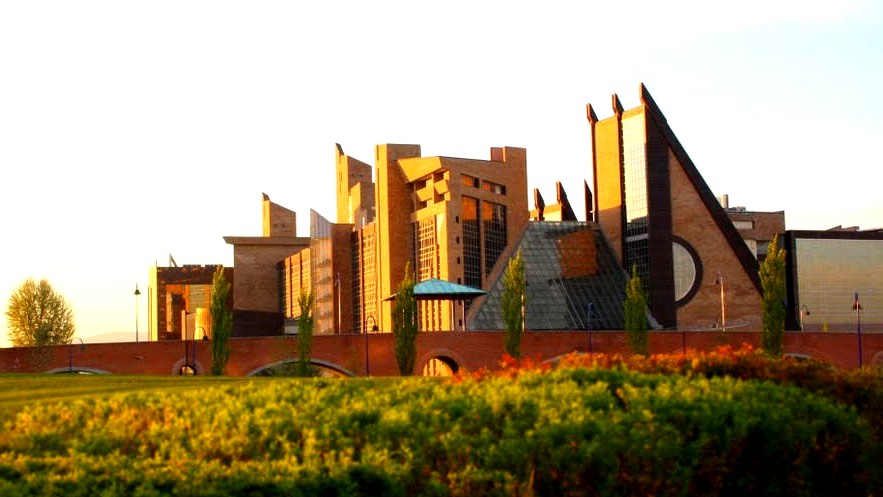
(Palace of Justice of Florence ““ photo by FrederickStudio)
A speech opening as did Bongiorno’s, that is, relying on a set of over-the-top considerations, and apparently so much depending upon one extreme premise, unavoidably conveys a perception of weakness, which is at risk to be transferred to the rest of the argumentation.
Thus, it would be a logical question to ask ourselves: why did Bongiorno chose such a setting and introduction, with several risky, over-shooting arguments?
A perception that the argument was unconvincing was palpable among the public as she was unfolding her theories about Perugian police opting for “political” scenarios and about sexy and free women seen as suspicious because of the women’s political movement.
Scepticism emerged even more openly when she described a scene with Amanda Knox releasing her false accusations while speaking under the hypnotic influence of interpreter Anna Donnino - whom she called “psychic” ““ which triggered some stifled laughs among the public.
Then her long introduction dealt with the unfolding of a rhetorical structure set around the concept of “half”.
I use the word ” rhetoric” in a most technical, non-derogatory sense, to mean the setting of a clear order and concepts designed to be easily remembered, anchored to multiple implicit suggestions, so as to remain impressed in the mind of listeners what is distinctive of the style of Giulia Bongiorno.
Introducing to “˜Halves’
In the previous trial instances she didn’t miss the opportunity to borrow characters such as Jessica Rabbit, Amelie and the Venus in a Fur. I thought she would mention at least a few characters of Disney or the Harry Potter saga this time too, and I was not disappointed as she met expectations on this matter (she did mention Harry Potter, the Eskimo kiss “˜Unca-Nunca’, the Bunga Bunga, the Aladdin Lamp and 9½ Weeks).
She entered the topical part of the introductive section saying “˜basta’ to always focusing on Amanda’s personality alone, while considering Raffaele just Knox’s other “half”, he is not half a character, he should not be seen as reflexion of Knox.
The curse of being “half” chases him also, meaning there are only “half pieces of evidence” against him. And this is the rhetoric structure envigorating the arguments after the introduction, the concept of “half” .
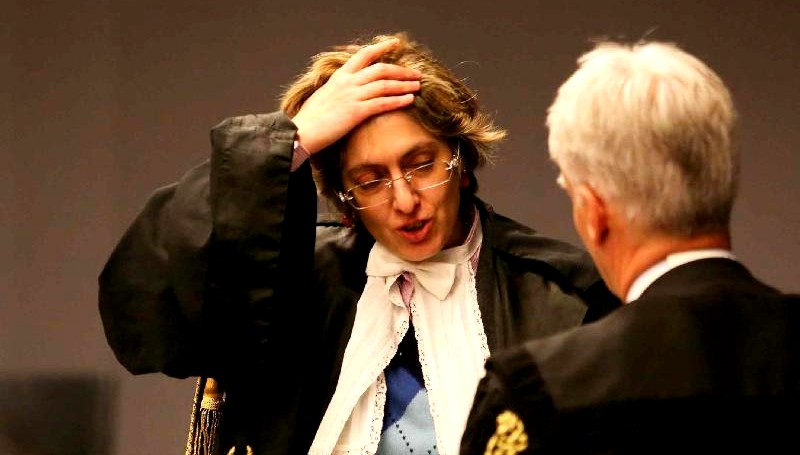
Only half pieces of evidence, almost a half admission, or the clear suggestion that there is maybe one “other half” of something (of culprits?) somewhere else, something not to be said, something that is not here.
The concept of “half” recurs and somehow pervades her defence, we should say something more about later on because she picked it up also in the subsequent hours of speech.
Some videos from the Florence trial available may still be available at the Sky site.
Primordial Fossils
Only after recollecting all these things in the “˜aggressive digressions’ over the introductive part, she goes on with a ponderous section which is the main part of her argumentation.
It’s a topic directly stemming from the introductive themes and premises, in the sense that this main part focuses on and blows up events of the first four days of investigation. It zeroes on few small details of the investigation history, the previous introductive part functionally working to justify the choice and to limit the argumentation to these topics.
Something the listener would notice from this first and main part of the arguments, as everyone well understands, is that these arguments are arranged in a peculiar type of architecture. A choice that makes crystal clear the actual state of the defence’s options.
The defence strategy is to focus attention on the supposed flaws in evidence collection at the beginning of the investigation, and not on the evidence set itself.
Bongiorno’s arguments do not map out the evidence set array. They do not devolve an effort of analysis in proportion to the actual weight of the of pieces of evidence.
The bulk of her speech in fact can be summarized as a criticism of some historical happenings ““ what she sees as such ““ which allegedly occurred within a very small time frame. She devoted hours to attacking the beginning of the investigation, early errors such as that the shoe print that had been wrongly attributed to Sollecito on a first assessment.
It appears this attack against the early procedures of the investigation was really considered to be the most effective weapon the defence had left.
The “˜topics’ Bongiorno addressed in this attack as “˜main points’ of evidence against Sollecito, are only three: the wrongly attribute shoeprint, Sollecito’s side-tracking the investigation, and “˜the knife’ (a topic which gets picked up again later, with a long discussion focused on the blade length).
In the same “˜knife’ topic she included DNA discussion, in a connected digression she dealt with the bra claps, called all the scientific evidence collection “˜the mother of mistakes’ and offered again the known criticism of Stefanoni’s alleged “suspect-centred”.
Later in her speech, she dealt with the other evidence topics, parroted the “˜principles’ expressed in the Conti & Vecchiotti report, offered the known arguments about the bathmat print, etc.
But the bulk of her defence hinged around those “˜mistakes’ in the early investigation phase, this was the actual core of her argumentation, while the other pieces of evidence were dealt with summarily, I had the impression they were almost treated as accessories.
It was clear above all that the defence was not battling the structure of the evidence actually existing today, they were battling a minuscule part of it, or better they were battling something else, something which is not directly the evidence, but rather some historical foundations of the accusation building.
Basically what Bongiorno conveyed is, the fighting terrain was the “˜investigators’ errors’, their “˜excesses’. That is, they were not actively contending Raffaele’s innocence any more.
The implicit content was rather obvious to the listener: a direct claim of Sollecito’s innocence had been already abandoned, that territory was left beyond the lines and the defensive front had been drawn back.
The topic now was not innocence, but rather how the accusation had been unfair and excessive.

At her opening, the quote of Satta was a device to draw attention to the events at the “origin”, so as to prepare listeners for the fact that defence arguments will be focused on what happened during the moments before the “black curtain” came down.
Hence the a long introduction starting from an image of the fury of a mob of sanculots, a narrative on this theme: people were willing to convict the defendants immediately and judges were legitimizing people’s violence.
She oriented the discussion towards the topic of early prejudice and excesses, so to justify the fact that she will talk about the early phases rather than the evidence set, and then she introduced the leit-motiv of the “half”.
This means, rather than disputing the pieces of evidence, Bongiorno wanted to set a “trial of the investigation”, she zeroed on just a few details actually not having much relevance in the actual evidence set.
She talked at length about elements that are kind of fossils ““ like when she went on discussing about the number of circles in the sole of Guede’s shoeprint ““ putting the alleged “errors” in the course of the investigation on trial, and her speech at times sounded as if it was a lecture about dinosaurs, recalling curious things now extinct.
The explicit function of her introduction was to justify her setting aside the evidence set, downplaying it by framing it into a historical moment, maintaining that it was collected and interpreted when investigators were already beyond the “black curtain” of bias, therefore tainted by prejudice, while judges were like sycophants before an angry mob.
The purpose behind the Black Curtain
The implicit, most important function of the introduction was accomplished via the concept of “half” and all the subliminal suggestions attached.
We should ask ourselves: is it reasonable to believe Bongiorno was so naïve to expect that the court may accept a theory about a dismissal of evidence in limine?
The answer is no. Bongiorno knew perfectly well that her preliminary criticism of the investigation would not lead to a dismissal of the evidence.
Bongiorno also knew that the series of preliminary arguments she would offer would be considered ineffective by judges. Such as that the knife DNA should be seen as unreliable preliminarily, that Stefanoni’s work lacked “transparency”, that Vecchiotti and Conti’s “method” should be taken at face value (Bongiorno knows C&V’s intellectual honesty was called manifestly questionable by the Supreme Court ), that this and that allele in the bra clasp DNA should not be considered because, etc.
She also knows that this court will not allow pieces of evidence to be considered separately from each other in a parcelled out way, and that imperfection of single pieces themselves do not work as a logical argument. Even less could she dismiss the evidence based on political and anthropological theories.
From the fact that she was setting afoot on a trial of the investigation instead of battling the evidence, the rational listener infers that she is well aware of the weakness of her position, since it implies that the evidence set as the battleground would be indefensible. She needs to search for another terrain of attack, a different structure, as the only possible move.
But there is also another implication. She does need to engage and draw attention to areas where she could “win” something, but this also means that her intent was to “soften” the accusation, to work it out at the flanks rather than face it frontally; to reduce the size of some fundamentals, the “excess” of the accusation.
In other words, to shorten the sentence. And if possible, to separate Sollecito’s position from that of Amanda Knox, albeit within the boundaries of her client’s plea.
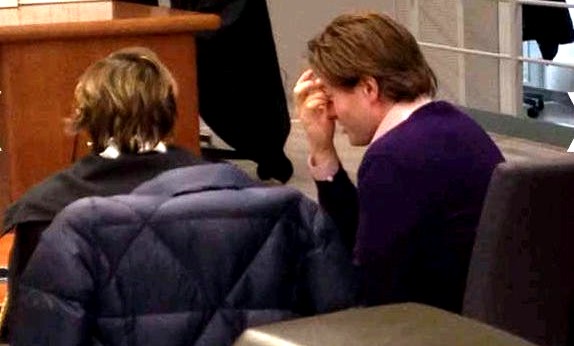
Her strategy of attack had a reason, that was to try to soften the accusatory attitude against Sollecito. Besides being risky (may sound extremely unconvincing) the strategy was also loaded with implicit meanings.
What was most stunning to me ““ as it was a recurrent topic through her whole speech ““ was the concept of “half”. She picked up this introductive theme several times, such as while speaking about the medical findings explaining that only “half” the length of the blade would be used, if a knife so large as Sollecito’s kitchen knife was used, saying that, in this event, this would mean the perpetrator did not intend to kill and killing was the effect of “mistake”, an involuntary movement.
The importance of the length of the big blade and its “half” was emphasized by a waving of knifes, in a quite impressive theatrical performance: “Either the big wound was made by a smaller knife” that was held by “someone else” or the knife was “plunged only by half” showing there was no intent to kill.
All this is to be coupled with the fact that, as said above, she devoted a main portion of her 6-hour speech to discussing things that are fossils, elements not existing any more.
She dealt later with other pieces of evidence too, though in a way that seemed somehow marginal, and she did not deal with some of them at all - the inconsistencies in Knox’s account, for example, were left completely out.
She was not that kind with Knox’s written memorials either, calling them “farneticanti” (waffling, raving).
I noted her complaining about Raffaele being “halved”, as his character is portrayed as depending on Amanda’s and thus seen as equally guilty insofar he was Amanda’s half ““ and this effect is somehow transferred to pieces of evidence.
Bongiorno’s rhetoric emphasizes that Sollecito was accused on “half” pieces of evidence (you perceive that the metaphorical repeating of “half” implies that evidence actually exists, “by half”, and at the same time this complaint about being seen as “half” of something is a subliminal suggestion that the defendants should be considered separately, and their charges as well, thus maybe their responsibilities if considered separately may be different; and when it comes to discussing how the murderer used only half of the blade, the subliminal suggestion is bring down the charge by half, involuntary event/manslaughter versus voluntary murder).
The Mark of Infamy
Giulia Bongiorno picked on the investigators and acted as if she was putting the investigation on trial not because she thought that this would lkead to the defendants being found innocent, but exactly for the opposite reason, because she expected them to be found guilty.
Insults against Prosecutor General Crini, against witnesses and and gratuitous accusations are a risky path but they are also an overt attempt to “soften” the investigation scenario, rather than fight it frontally.
She had no hope to make her client look innocent, her only hope was to soften the strength of the accusation, to make him look less guilty, not so bad as the investigators saw him.
She pursued this in two ways, by suggesting that he should not be seen as the “half” of another perp but rather his responsibility should be considered separately, only that evidence which proves directly against him (Bongiorno repeatedly pointed out that Knox did not utter his name in her interrogation and statement), his actual responsibility might be much lesser than the charge for which he is accused.
The other arm of the defence’s pincer move, the second way to try diminish the accusation, was to portray the investigators in bad light. The “˜excess’ of accusation was to lay blame on investigators for their bias and errors.
Bongiorno’s attack against the investigation might be intended to achieve a psychological effect due to comparative process.
If you consider how the police are responsible for “˜excesses’ and disputable behaviours, you may think the investigators have been prone to gross mistakes that lead to exaggerating Sollecito’s implication, thus the accusation should be not be taken at face value and should be corrected. Maybe the correct assessment of evidence proves he not as much implicated as they had thought.
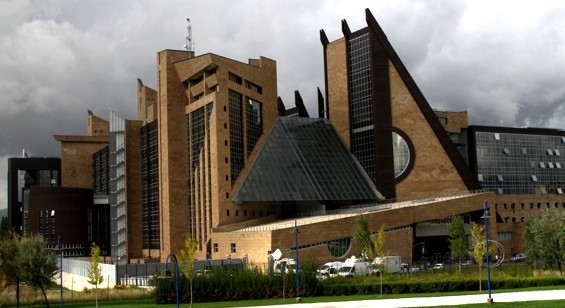
This seemed to be Sollecito’s own defence strategy, albeit implicit, since Bongiorno must restrain her action within the boundaries of her client’s plea.
In order to follow her strategy, however, Giulia Bongiorno decided to take a few steps which must be pointed out as particularly reprehensible and infamous.
I was surprised and stunned by those action because they qualify the character of Giulia Bongiorno as far worse than I thought, I really did not expect her to stoop so low.
The infamous part of Bongiorno’s speech is her gratuitous name calling and defamatory attack against Anna Donnino, her attempt to smear her professional reputation and the rude insult in calling her a “˜psychic’.
In real life Anna Donnino is a very respected professional, she has been working for the Questura on tasks of interpreter and language mediator (not as a “˜translator’).
She is also an intelligent person, she is precise and expresses herself with the utmost clarity as her lucid testimony shows.
She is known not only for having unquestionable professional ethics, but also she has an excellent reputation as a person; she is honest and humane and known by everybody for her extremely reassuring, protective temperament, and for her expertise and excellent performance of working with people.
She would help immigrants in difficulty to express themselves and understand their rights and was priceless helping the police to obtain precise information in their investigations.
As an expert in chuchotage and linguistic mediation from two foreign languages, the professional quality of her work is excellent. Her training and work is of interpreter and language mediator although sometimes shee is given translating tasks such as the translation of recordings and wiretappings.
The Questura of Perugia used to hire “˜language mediators’ at the time. You don’t know what a language mediator is? See a university course for a degree in Language Mediation.
The Questuras of some bigger cities also have “˜cultural mediators’ in addition. They are mother-tongue trained to deal with African or Chinese immigrants (one of the many young people having their internship as cultural mediator in a Questura is shown here.)
To me, this defamatory attack against Donnino was most disturbing. By doing this Bongiorno came across as surprisingly mean, I’d say what she did was really infamous.
Indeed this was not the only virulent attack, it came after insults to the city of Perugia as she was comparing its citizens to a mob of blood-thirsty fanatics.
This attack too is also particularly vicious, since it exploits, inflames and is subtly synergic with the tones of lies and prejudices disseminated by a perfidious propaganda strategy.
But at a certain point, Bongiorno focused the defamation against one person. As she unfolded a narrative about Anna Donnino acting as a “˜psychic’ who managed to hypnotize, to gaslight Knox to the point of inducing a state of trance in which she mistook a dream for reality, some people couldn’t help laughing in the courtroom.
But even if we consider the surreal and comical rather than the convincing effect, the defamatory intent stands out as reprehensible and humanly vicious.
This is because, as I said above, these particular insults were directed against a person distinguishable for her being a most decent, honest and trustworthy character, and also ““ a further reason ““ because of the recent events for which this person experienced personal suffering: Anna Donnino, a mother of teenagers, has been struck with cancer, and has undergone surgery.
She is under treatment but still currently remains in very bad health.
The attack against Anna Donnino is an action that rebounds as an ugly stain on the reputation of those who launched it. A young man from Perugia created a Facebook group to express a the citizens’ “hate” for those who lead a defamatory campaign of lies against the city. He collected over two thousand likes within three days.
Some of the comments were about Bongiorno’s insults against the city and against respected citizens, pointing out her outrageous hypocrisy since Giulia Bongiorno poses as a campaigner for the respect and dignity of women.
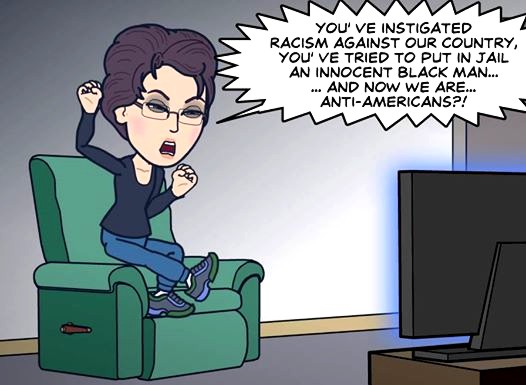
(a StripBit comment by a poster on a Facebook group)
Criticism of Giulia Bongriorno pointing out her hypocrisy is actually not a novelty, it has appeared long since in the press and on the internet.
But it’s hard to understand how someone like her, promoting an image of herself as an advocate for women and for correctness and respect in language and culture, could take such a an egregiously visible false step, come out with such stupid stereotypical rants, only for what looks like an awkward and useless cause.
Conclusion
A note for the record: we may recall Bongiorno has also attacked the Perugian police officers, citing the recording of some of their phone conversations in which they say bad words about the Sollecito family.
We can understand her outrage (at least we could, if only she were not the hypocrite she is) but at the same time we can’t fail to notice that she “forgot” to mention another half of the phone call recordings.
Specifically those where the members of the Sollecito family were speaking about the police officers; and the kind of language they were using, while attempting to plot “˜under the table’ help from some politician.
Expressing their intent to “˜scorch’ officers and “˜destroy’ magistrates, and one person even suggested that if he met Monica Napoleoni on the road, he would kill her by “˜running over her with the car’ then flee without telling anything, pretending that nothing happened.
Never mind.
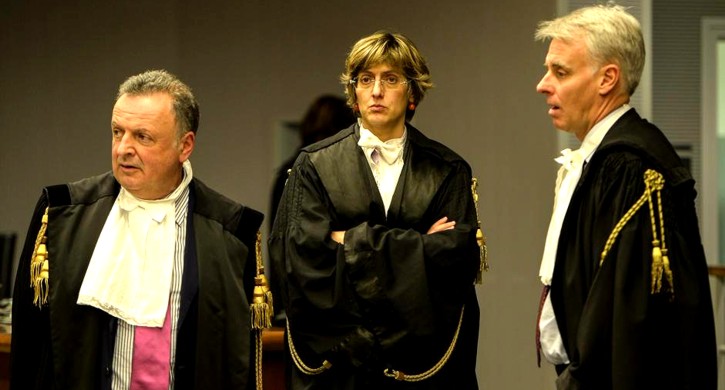
After these last sparkles and the knife waving Bongiorno’s performance was over. In the following day’s hearing it was Maori’s turn. As a really last resort, he was taking on the task of disputing evidence in a more “traditional” way, objecting to points of evidence.
Possibly this revealed even more the extreme weakness of the defensive argument (a commenter called it “˜pathetic’). I did not listen to his argument myself, I only notice that he did not get much space neither in the press nor in the pro-Knox commenting sites; this might be a clue of how unconvincing he might have been.
One thing that however I could learn about it, is about the feeling, the perception that Maori pointed out even more the separation between the two positions of Amanda Knox and Raffaele Sollecito.
A hint about this comes in the words of a journalist who was questioning Alessandro Nencini in the lounge immediately after the verdict: the journalist pointed out how Sollecito defence “tried to split the positions of the two accused”.
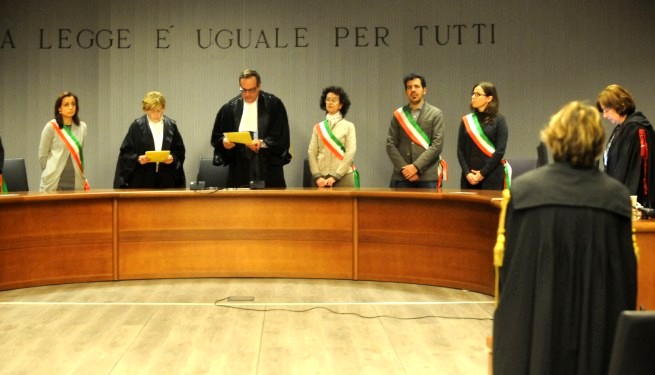
This mild attempt of a separation was the last act by the defence. As for Raffaele Sollecito himself, we were left with his rather different claim, his book where he described himself as sticking to a “˜honour bound’.
He reportedly bragged about this also with his ex-girlfriend Kelsey Kay, who described him as feeling very entitled because of his loyalty to Amanda Knox and believing she owes him a vital a favour; but Knox won’t even respond to his messages.
Then, we had his final admission in an interview that his friendship with Amanda Knox has “˜deteriorated’, because apparently Knox in practice no longer supports him as before.
If his defence advisors understood that they needed to somehow “˜separate’ his position from Knox’s at any cost, despite his plea, to suggest he may be implicated but just “˜less’ guilty, we may only agree with them on this. It would also be convenient for him to confess even if he shared the same degree of guilt of Knox.
Sadly, instead he still felt compelled to offer further lies and changing stories such as”˜I noticed no blood on the bathmat’ when questioned by Kate Couric; he offered again a story of pricking Meredith’s hand while cooking together at the cottage.
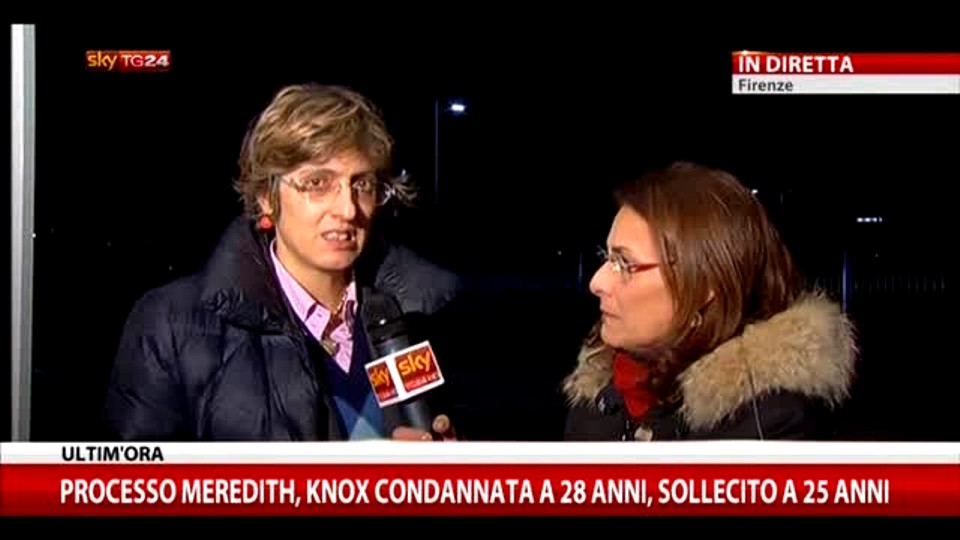
Other murderers, who committed even more heinous crimes, have recovered and rehabilitated themselves after time spent in prison; even some of those deemed among the worst serial killers managed to do this by expressing remorse ““ for example the rather psychopathic “˜Ludwig’ (Furlan & Abel) killers.
Sure after the years he will spend in jail for the gang-like crime he is found guilty of, there would be a possibility for a “˜casual murderer’ such as he is to be perceived as rehabilitated. But to see him as “˜less guilty’ or as “˜rehabilitated’ would be impossible as long as he remains silent or denies.
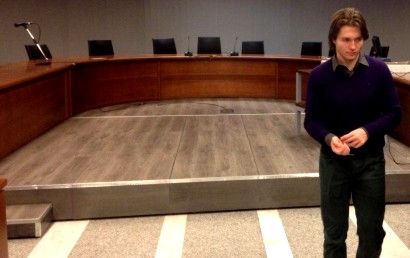

Comments
A deeply insightful take. Well done. Hypocrite does seem to ring a bit true…
1) This is the hypocrite who it seems may have helped to ensure a Hellmann court by getting Judge Chiari pushed aside?
2) This is the hypocrite who showed little liking for Sollecito at trial and rumor had it at the time nearly walked off the team?
3) This is the hypcrite whose colleague seemingly originated the charge that Mignini described the crime as satanic and who never corrected or reigned Maori in?
4) This is the hypocrite who retained her post as head of the parliamentary justice committee with influence over the budget for justice (how’s that for a conflict of interest)?
5) This is the hypocrite who allowed Rocco Girlanda, a committee member under her control, to threaten the police budget and to petition the president for an investigation of Perugia police?
6) This is the hypocrite who threatened to sue witness Aviello for claiming she offered bribes in his prison for testimony helpful to Sollecito - and then didnt sue?
7) Thiis is the hypocrite who helped Sollecito to write his defamatory book and who is maybe being investigated for that along with him?
8) And this is the hypocrite who (as Yummi mentions) claims to do the right thing for women victims and then treats one of them like trash?
Defense lawyers in the US would get away with next to none of that, and could be roasted as a hypocrite on the legal talkshows on TV.
As for Giulia Bongiorno being “roasted”, well.. it would be difficult to ask her questions about possible corruption of the Hellmann-Zanetti court, since we don’t know if and how she was involved.
If she happens to be actually involved in such a thing, the issue would be a bit worse than hypocricy.
As for beng a parliamentary and a lawyer at the same time, this is a conflict of interests but unfortunately it’s legal. (the justice comittee is just a group of members of parliament).
To be fair also about Rocco Girlanda: I seriously doubt Bongiorno ever had other members under her “control”. Girlanda and Bongiorno as politicians have now both fallen in disgrace, they shared the same political fate but still they belonged to two different parties (not even allied over the last years).
Did she help Sollecito write his defamatory book? I don’t know (I think probably not), but if she did, then the person who should be pissed with her is Luca Maori, given the derogatory portrait Sollecito’s book makes of him.
In the book’s credits she is thanked for the help she gave. She could have (if she didnt) and should have read all the proofs.
Somehow the notion that the prosecution was asking for an illegal deal against Knox got through (RS dad Francesco on Porta a Porta said it wasnt true.) So did this:
So I dont think Bongiorno was a sole firebrand who RS had to hold back. She left Judge Nencini unpersuaded in the end after he had openly said if RS had any more to say to help the court he could go ahead.
In the end winning something for the client is what counts. Giulia Bongiorno seems to have a tendency to lose and then be a sore loser. Examples are the Andreotti case and also this:
http://truejustice.org/ee/index.php?/tjmk/comments/giulia_bongiorno_loses_a_high_profile_case/
What an excellent post Yummi, and the photos.
Illuminating, incisive, insightful and extensive…very much appreciated.
Thank you for your insights, Yummi. I wonder if what we ‘read between the lines’ was wasted on the court though? Clearly she is erudite and can throw out these references, and I am sure the highly educated judges got it, but at what point does that manner become grating? The histrionics, the faints in court? Is it drama, or does she really have a nervous disorder?
Regardless, I look forward to her next performance before Cassazione 😊
I do not understand the last photos of RS? in a red car? striking a woman? asking for donations for gas money?
@ Ergon
It’s drama, but I also think Nencini’s court got the message; in fact they apparently understood the suggestion about splitting the two positions of Knox and Sollecito.
However Nencini saw the logical objection: how can the court ascertain if Sollecito’s was a minor role, unless he undergoes a questioning?
@ believeing
I think the girl is Greta, his new girlfriend from Oderzo. Photos from an Italian sensationalist magazine.
The request for donation is obviously a joke (my photoshopping) 😉
Sorry - I was thinking it was a joke but was confused.
Just read a recent interview with the BBC and Raffaele - was interesting but nothing new really.
http://www.bbc.com/news/magazine-26338637
And the separation words get stronger:
http://www.people.com/people/article/0,,20791568,00.html
Thanks for the reply, Yummi. Then Bongiorno, seeing as how her client has hamstrung her, has histrionics because she is frustrated with him?
Being of an Anglo persuasion 😊 I prefer it when people don’t talk in code; she should have asked to split the trial/argued he was a dupe after she said he isn’t one, but still, I look forward to her next performance at Cassazione. Looking at her waving those knives about, was she Horatio at the bridge, or Queen Boudicca, charging at the Romans?
Thanks Yummi
Interesting photo at top.
Our modern Portia, aka Bongiorno, isn’t quite up to the original model. Mind, she had a tough task - she couldn’t start pleading for some quality of mercy for her benighted client since that was signally absent in the horrendous murder. Therefore the bold “he wasn’t there, didn’t do it” course. It’s surely end-game for all that now. We’re all weary beyond words with this farce.
No one is fooled by the theatrics, she is really waving a knife at the judges because she knows she has lost yet another case.
If she wants my advice (put that knife down) the best bet in future, to restore her dismal reputation, is to take on those cases that aren’t necessarily high-profile and don’t earn high fees but which her intuition tells her are worthy and therefore most likely winnable. In other words, get a life.
I rest my case.
Thank you Yummi for the excellent thorough post. I appreciate all your efforts as well as everyone else’s. I have lurked for a couple years now and am very grateful I can benefit from everyone’s diligence. You are all making a difference in the fight for True Justice!
This “separation” thread that is beginning to appear now. Is Raffy finally “cracking” now that he faces sure time in prison? Will he still be eligible for any kind of deal if he gives Knox up? This is the true “when push comes to shove”—it’s going to be very interesting in the coming months. I think it was Graham who said that the real show starts now.Stay tuned.
Again, much gratitude for all your posts and hard work.
Wascana
Reading everything as I do I have noticed a switch in the pro Knox camp, not that I give a damn about them anyway, but it has become obvious that their histrionics, plain nastiness and panic is getting worse.
My take though is that the longer this goes on the less people believe in her innocence and in that regard the famous (infamous) P/R machination will come back to haunt them. People are getting rather tired of all of this and the longer they are out there the worse it gets for them both.
Even for people who do not know all the facts there is a growing inclination to say. “If she’s so innocent then why doesn’t she go back and fight instead of sulking in the US.”
Sooner or later all the facts will come out and the cherry picking of the American media will once again do a 180 degree turn around similar to other shows whose only concern is the ratings.
Sollecito definitely appears to be cracking, and the thing that must be most frightening to the Knox camp is that he isn’t even in custody yet.
Ah Bongiornos I bet she’s a bundle of laughs at a party. I hear she does ‘stand up comedy’
I’m really sorry but I can’t help it. The picture at the top of Bongiornos in full flight is absolutely identical to the ‘Wicked Witch of the West’ in the ‘Wizard of Oz’
“I’ll get you and your little dog too.”
Once again “Truly Sorry” for this but the likeness is uncanny.
@ Ergon
It’s an interesting point of view. Given my own point of view, I don’t know if or when there is something specific “Italian” about talking too much “in code”. Probably there is something in the culture, insofar as there is an opportunity if needed since the culture is so rich with these precedents, but I don’t know if this has a real weight here, don’t know how much it played a part in Bongiorno’s choice of theatrics.
Giulio Andreotti would recall his mother teaching him “If you can’t speak highly about someone, don’t speak about them”. So “not speaking” is certainly a way of telling something about things.
But here, Bongiorno’s problem was that she could not speak. You said that she should have asked to split the positions. The problem is that she could not. Because her client (and his family) pleaded he had a shared alibi with Knox and had no minor role, this means she could not use the argument explicitly. She cannot explicitly admit to something her client did not admit. Hence, the need to be silent about it. But she showed it to the judges.
As for the question, with Boudicca and Horatio I think you may be flying too high 😉 Italian commenters called her show a “sceneggiata napoletana” (someone quoted De Filippo and Filumena Marturano, but that is offensive to De Filippo’s theatre imho). I may think Madama Butterfly, Puccini’s melodrama. But actually it may be more a petty show that you might see from a used car vendor in Naples.
I’m glad you see that, Yummi. I found her literary references quite interesting, and like you, I like to look at what is not said, than what is.
I got what “sceneggiata napoletana†means, though then all I could think of was Sophia Loren, so what do I know, she’s from Rome.
I agree that Bongiorno’s hints were not lost on the judges, but, Raffaele got 25 years anyhow. I simply do not see Cassazione reducing that, but who knows? It might well be seen as the finest performance of her life 😊
“sceneggiata napoletanaâ€, sound like Italian for “Neapolitan shenanigans”. They sounded Irish to me.
YUMMI!
I have finally found the time to read your splendid article. Thank you! Thank you for giving us the details about GB’s final defence fling. She is a clever woman and Raffaele can, in no way whatsoever, claim he wasn’t well represented. He has had the best representation possible for his hopeless case.
The arguments are interesting and finely tuned to manipulate perceptions and beliefs about the case. Thank goodness Nencini and the other jurors were not fooled and were in possession of facts.
I was going to make some other comments until I reached the part about Anna Donino which stunned me and stopped me in my tracks. My heart goes out to her as a fellow cancer patient. As you write, for Giulia Bongiorno to stoop so low is absolutely breathtaking.
At the start of this case I did hold Giulia Bongiorno in some esteem as I had read of her advocacy for women; however, as time passed, I was unable to see one iota of empathy for women in their suffering from this woman.
How does she reconcile her defence of Raffaele and, by extension, of Amanda’s crime with her own principles and ethics?
It just underlines the fact that she has neither.
P.S. I had to laugh at your opening sentence,
“The picture of a serene-looking Giulia Bongiorno waving a couple of knives in court on 9 January may be visual inspiration to this reflection about what we can understand from the structure and content of her closing arguments.”
- under the photo of a crazy-looking woman wielding a knife, teeth bared!
I have to post this again. If you are so convinced of Amanda Knox’s guilt, please debate the doubters here: http://edition.cnn.com/2014/02/26/world/europe/italy-knox-ex-boyfriend/
There are so many of them.
Very funny Grahame Rhodes - regarding the WW of the West! She truly does look scary in that picture!
On another note, I am a bit more sympathetic to her pregnancy situation during the trial given her quite advanced age for having a (first?) baby - wasn’t she about 45 at the time? She looks more like she should have older teenagers at home rather than a little baby! I’m sure it was something she had put off for a very long time or else was not able to have one until then, and it is difficult to have a baby at that age. I saw a couple of photos of her with the baby which were cute. Some other articles said she opposed scumball Berlusconi, but I thought you said here that she supported him?
RS will be a fool if he doesn’t start revealing more information to help himself - his father must be desperate at this point. 25 years in jail is no laughing matter. No wonder he looks like he has aged 10 years lately.
Unrelated?
Another Knox in trouble:
http://www.bbc.co.uk/news/uk-northern-ireland-26390400
Hello Janenewyork
Yes of course… I have posted there and just about everywhere else as many times as I can. But it’s like talking to a wall. However I see cracks in that wall and I am convinced that given time and the general public’s lack of interest and or boredom, this will all come full circle. The longer this goes on the more people get tired of what is essentially to the vast majority, old news and as more facts become available… RS RG notwithstanding, then I believe there will be a tremendous backlash and their entire house of cards will come tumbling down. I for one however, will never stop posting and arguing until Knox and RS are in jail serving their full sentence.
So why didn’t Raffaele ever separate his position and his case from Amanda’s? Why didn’t he ever say it totally outright, versus circuitously as he has done, with his statements about degrees of guilty (where he is not and she is technically not but there is more evidence against her that she is).
I have always assumed that he never came out against Amanda (and she never against him) because if either one did then the gloves would be off and each would sink the other fast, because they were both enmeshed in the murder.
But what do others think?
Hi aj1880
You look to be correct on that one. There is simply too much evidence against Sollecito to argue successfully TO A COURT that he wasnt there. Bongiorno didnt even try that; she tried putting the cops on trial instead which merely made the Nencini court impatient and the audience in the court sarcastically amused.
Those two are chained at the hip for a lifetime and the distance they can ever put between themselves is very limited. But that hasnt stopped each shown anger, jealousy and suspicion toward the other since 2007.
RS and Guede have both repeatedly hinted that Knox led the attack and plunged in the big knife that killed Meredith. But it was probably one of them or Kokomani who opened the way to Knox being on amphetamines (believed by officialdom in Perugia but unwittingly trodden on by Judge Micheli) and it was surely Sollecito who made sure that two or three knives were present, all of them his.
We do see a need for a new post to elaborate all that incriminates Sollecito - the list of items is a long one, and several including the print on the bathroom mat would be smoking guns to an American jury. One could imagine Knox saying to herself “if he is going to totally rat on me, I’ll take both of us down in flames rather than sit idly” and this would be the evidence list she would spell out - and he knows that.
Not just the footprint Peter but the imprint of the knife on the bed that was shown in high resolution photographs. Plus of course the other DNA evidence. My main fear is that if it is too long then many people will just tune out. Most people these days are only interested in texing and/or thirty second sound bites. Even those seem to be too long in some cases.
Grahame Rhodes, thank you for posting. Some Knox supporters are very stubborn. I guess they have vested interests in this. But others do have legitimate questions that need to be answered effectively. That is why we should not ignore them.
Here is something new that I find very difficult to accept. They are saying that Meredith was involved in drug growing, which should be considered illegal and which brought her demise. Below is the text of one of the people (Jack D. Montana) who made that claim on http://edition.cnn.com/2014/02/26/world/europe/italy-knox-ex-boyfriend/:
“Meredith was engaged in criminal activity. She was taking care of the pot plants that her boyfriend and his friends had in the house. This would be a felony in the US, the UK and Italy also. Rudy knew this as he was a friend of the boys downstairs. He knew that if he broke into the house, as he had done previous times, no one was likely to call the police. Meredith (and Amanda) were totally unwise to be living there and participating in the drug scene there. For Meredith it proved fatal, for Amanda it proved to be almost as bad. Both should have known better.”
I hope that someone can go to the media to dispute this. If not, it is hard to argue with these people.
The last supporters of Knox are most desperate. They will do anything to achieve their goal. We have to get much stronger and fight most fiercely in the next two years against all these false accusations.
Another accusation they have made is that the Kercher family is going after money and so ignore Guede because he does not have money while RS does. It is making my blood pressure rising so much I am worried that I will not be able to take this much longer. These people are extremely mean.
Sorry, the link is http://edition.cnn.com/2014/02/26/world/europe/italy-knox-ex-boyfriend/
@ janenewyork
“Growing drugs” is not illegal in Italy. Drug trading is illegal, as well as producing for commercial use.
Growing drugs for personal use is not illegal. Such allegation is gross ignorance of the law.
@janenewyork:
Our time may be better spent writing objectively about what happened - clearly stating the truth as straightforwardly as possible - rather than trying to argue with people who are unshaken in their beliefs regardless of the mountains of evidence. They are mean, as any here can testify.
Regarding the “growing drugs,” it is apparent, as they have demonstrated in the past, that they will stop at nothing to dishonor and smear the real victim of this crime. I have read some things over the years that have made my stomach turn - absolutely vile. Basically, “I don’t go there anymore.”
@janenewyork:
By the way, “growing drugs” for personal use is now legal in Washington State - so that argument now carries no weight. Besides, it wasn’t “reefer madness,” it was Amanda Marie Knox “breaking bad.”
Hi, Grahame
One of your comments above made me think that a new meaning has been coined for the expression, ” to be all thumbs”. The texting zombies are not seeking instant gratification, as you suggest, but rather putting a technological filter between themselves and their surrounding humanity. I regularly observe tween girls texting a conversation they could be having for free simply by turning to the friend sitting beside them and opening their mouths. Soon the sound of another being actually addressing you directly will be cause for shock!
“Sorry—we’re you talking to me? I’m all thumbs, a social klutz! Can’t we just exchange numbers?”
Meant to post on page one…
Where next:
Click here to return to The Top Of The Front PageOr to next entry As Knox & Sollecito Try To Separate Themselves, Each Is Digging The Other In Deeper
Or to previous entry How Claims By Perpetrators & Their PR That THEY Are Victims Get Equal Pushback

